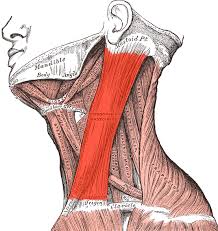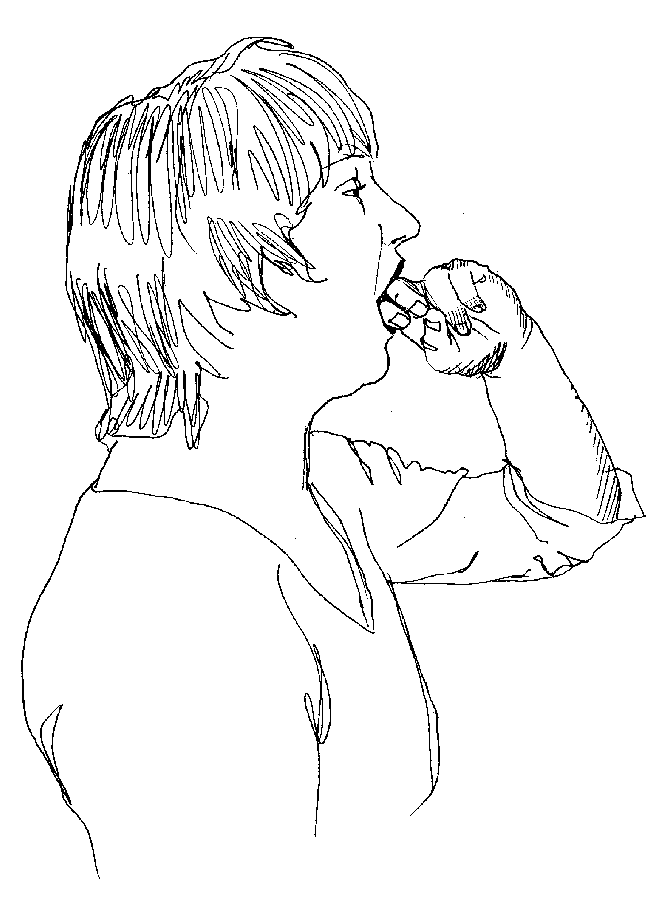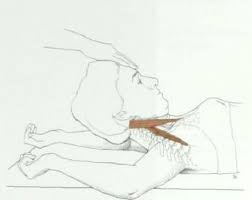Head and Neck Orthopedic Tests
Head and Neck Orthopedic Tests:
- Anterior Neck Flexors Strength Test
- Anterolateral Neck Flexors Strength Test
- Cervical Compression Test
- Cervical Distraction
- First Rib Mobility Test
- Orbicularis Oculi Strength Test
- Posterolateral Neck Flexors Strength Test
- Sinus Transillumination Test
- Spurling’s Test
- Swallowing Test
- Three- Knuckle Test
- Upper Trapezius Strength Test
- Vertebral Artery Test
Head and Neck Orthopedic Tests:
Anterior Neck Flexors Strength Test
Purpose:
To asses the strength of the neck flexors ( SCM, anterior scalene, supra and infrahyoids, longus colli and capitis, and rectus capitis anterior)
Procedure:
– Client is supine
– Client abducts arm to 90°, flexes the elbows to 90°, and rest their dorsal hands on the table.
– Client tucks chin, and then lifts head off the table.
– Client keeps the head lifted off the table ( Grade 3). Client resists therapist posteriorly-directed pressure ( Grade 5)
Positive Sign:
Weakness of Anterior Neck Flexors if Client is unable to keep the neck in flexion against gravity or the therapist’s pressure.
Head and Neck Orthopedic Tests:
Anterolateral Neck Flexors Strength Test
Purpose:
To asses the strength of the Anterolateral Neck Flexors ( SCM and scalene on one side).
Procedure:
– Client is supine
– Client abducts arm to 90°, flexes the elbows to 90°, and rest their dorsal hands on the table.
– Client rotates the head away from the side being tested. Therapist stabilizes the side being tested.
– Client lifts the head into slight flexion and hold it against gravity.
– Client keeps the head lifted off the table (Grade 3).
– Therapist holds the temporal region on the side being tested.
– Therapist pushes in an oblique posterolateral direction, away from the tested side.
Positive Sign:
weakness of the Anterolateral Neck Flexors if the client is unable to keep the neck in flexion against gravity or the therapist’s pressure.
Anterolateral Neck Flexors Strength Test Video:
Head and Neck Orthopedic Tests:
Cervical Compression Test
( for clients who cannot rotate or extend their head)
Testing For:
Compression of cervical nerve root or facet joint irritation in the Lower Cervical Spine
Procedure:
– Client is seated. Client’s head is in neutral. Therapist stands behind client.
– Carefully apply compression downward on the head of the client.
Positive Sign:
Radiating pain or other neurological signs in the same side arm ( nerve root) and/ or pain local to the neck or shoulder ( facet joint irritation).
Cervical Compression Orthopedic Test Video
Head and Neck Orthopedic Tests:
Cervical Distraction Test
Purpose:
To relieve the pressure on the cervical nerve roots ( may be used after Spurling’s or Cervical Compression Tests)
Procedure:
– Client is supine or seated. Client’s head is in a neutral position at all times throughout the procedure.
– Therapist grasps the client’s head at occiput and temporalis. One hand on either side of the head.
– Slowly traction the client’s head in a superior direction. Maintain the traction for at least 30 seconds.
Cervical Distraction Orthopedic Test Video
Head and Neck Orthopedic Tests:
First Rib Mobility Test
Purpose:
To test the mobility of Rib 1
Procedure:
– Client is seated.
– Client fully rotates their head away from the side being tested.
– Client then fully flexes the head to their chest.
Positive Sign:
Client has limited neck flexion. The cause for the hypomobilty may be tight scalenes.
First Rib Mobility Orthopedic Test Video
Head and Neck Orthopedic Tests:
Orbicularis Oculi Strength Test
 Purpose:
Purpose:
To confirm Bell’s Palsy
Procedure:
– Client seated. Client keeps their eyes closed.
– Therapist tries to slowly open the client’s eye on the affected side with their clean hands.
Positive sign:
Client cannot keep their eyes closed against therapist’s resistance.
Head and Neck Orthopedic Tests:
Posterolateral Neck Flexors Strength Test
Purpose:
To asses the strength of the Posterolateral Neck Flexors ( splenius capitis and cervicis, semispinalis capitis and cervicis, cervical Erector Spinae on one side)
Procedure:
– Client is supine
– Client abducts arm to 90°, flexes the elbows to 90°, and rest their dorsal hands on the table.
– Client extends their neck. Therapist stabilizes the side being tested.
– Client then rotates the head towards the side being tested.
– Client holds the head in this position.
– Client keeps the position against gravity (Grade 3).
– Therapist holds temporalis area of the unaffected side, then pushes in an oblique posterolateral direction, away from the tested side.
Positive Sign:
weakness of the Posterolateral Neck Flexors if the client is unable to hold their neck against gravity or the therapist’s pressure.
Head and Neck Orthopedic Tests:
Sinus Transillumination Test
Testing For:
Infection of the frontal and maxillary sinuses
Procedure:
– Test is performed in a dark room
– Use a bright flashlight. Cover the flashlight with transparent and clean plastic bag
– Maxillary Sinus: Client places the flashlight inside the mouth, against the roof of the mouth.
– Frontal Sinus: Using a different clean plastic bag, place flashlight against the medial aspect of the eyebrows.
Positive sign:
Sinuses are infected or blocked if they do not glow red ( transilluminate). A normal sijus shows a red glow in the area occupied by the sinus.
Sinus Transillumination Orthopedic Test
Head and Neck Orthopedic Tests:
Spurling’s Test
Testing For:
Compression of a cervical nerve root or facet joint irritation in the Lower Cervical Spine
Procedure:
– Client is seated. Therapist stands behind client.
– Client slowly extends, sidebends, and rotates the head to the affected side.
– Therapist carefully apply compression downward on the head of client.
Positive Sign:
Radiating pain or other neurological signs in the same side arm ( nerve root) and/ or pain local to the neck or shoulder ( facet joint irritation).
Spurling’s Orthopedic Test
Head and Neck Orthopedic Tests:
Swallowing Test
 Purpose:
Purpose:
To see if the cause of the pain when swallowing, is trigger points on the SCM
Procedure:
– Client is seated
– Palpate and Pincer grasp SCM. Locate the most tender point. Place a firm pressure on the most tender point ( muscle belly) and have the client swallow
Positive Sign:
pain diminishes when the client swallows as you pincer grasp the most tender point
Otherwise:
pain may be caused by throat infection, hematoma, bony protruberance of the cervical spine or tumor so client should be advised to see a medical doctor.
Head and Neck Orthopedic Tests:
Three- Knuckle Test
 Testing For:
Testing For:
The available active range of depression of the mandible or TMJ hypomobility
Procedure:
– Tell client to open jaw
– Ask them to insert as many of their own flexed proximal interphalangeal joints of the non-dominant hand
Positive Sign:
Client can only get one knuckle or knuckles between their teeth.
Head and Neck Orthopedic Tests:
Upper Trapezius Strength Test
Purpose:
To asses the strength of the Upper Trapezius Muscle
Procedure:
– Client is supine
– Client abducts arm to 90°, flexes the elbows to 90°, and rest their dorsal hands on the table.
– Client extends their neck. Therapist stabilizes the side being tested.
– Client then rotates the head away the side being tested.
– Client holds the head in this position.
– Client keeps the position against gravity (Grade 3).
– Therapist apply pressure on the posterior head, slightly pushing the head anteriorly and obliquely away from the tested side.
– Client tries to resist therapist’s pressure ( Grade 5)
Positive Sign:
Weakness of the Upper Trapezius if the client is unable to hold their neck against gravity or the therapist’s pressure.
Upper Trapezius Strength Test Video (another procedure)
Head and Neck Orthopedic Tests:
Vertebral Artery Test
Testing For:
Ischemia or Circulation deficiency of the vertebral artery at the transverse foramen
Procedure:
– Client seated
– Client actively rotates the head fully to one side, then extends the neck
– Hold for 30 seconds
– Do the same on the other side
Positive sign:
Client complains of dizziness, nystagmus, or both. ( Further testing is contraindicated and client must be referred to a doctor )
